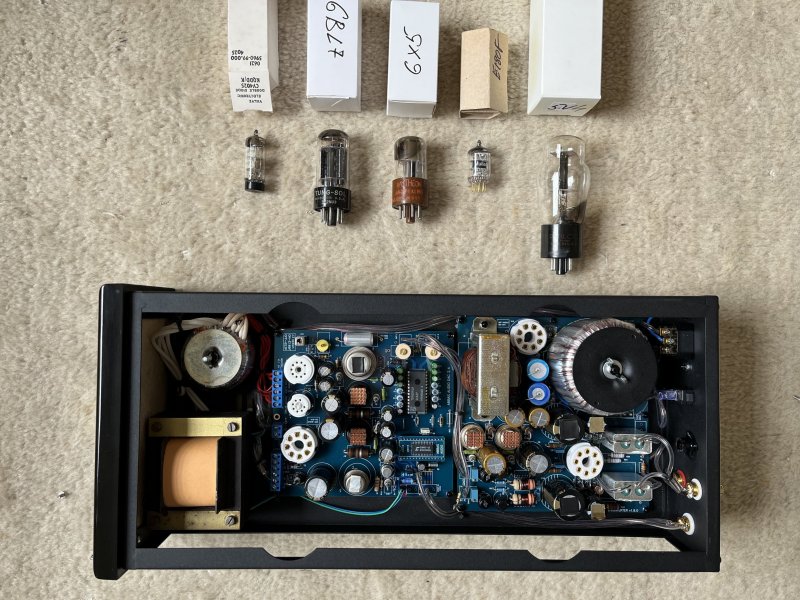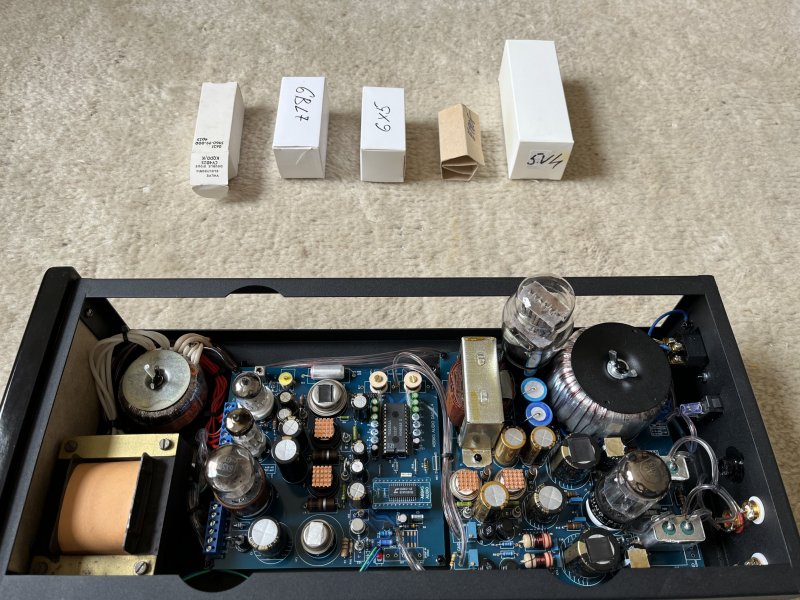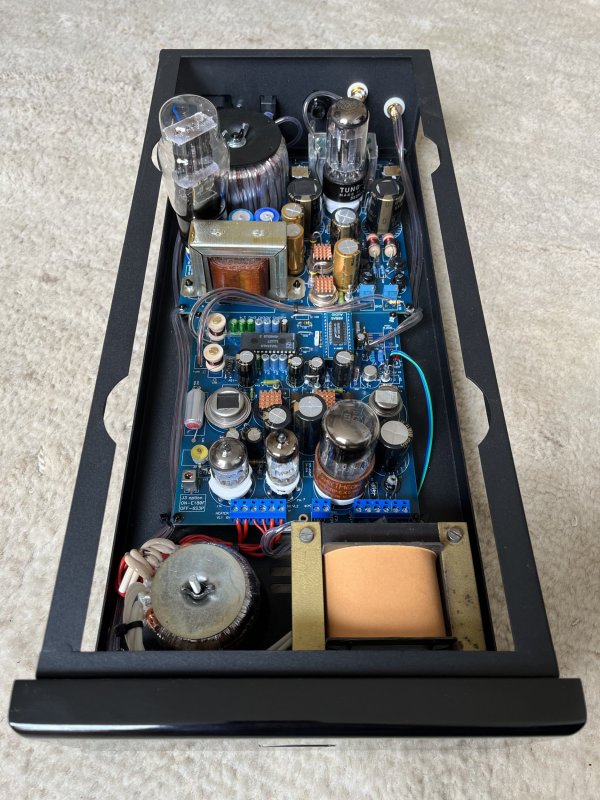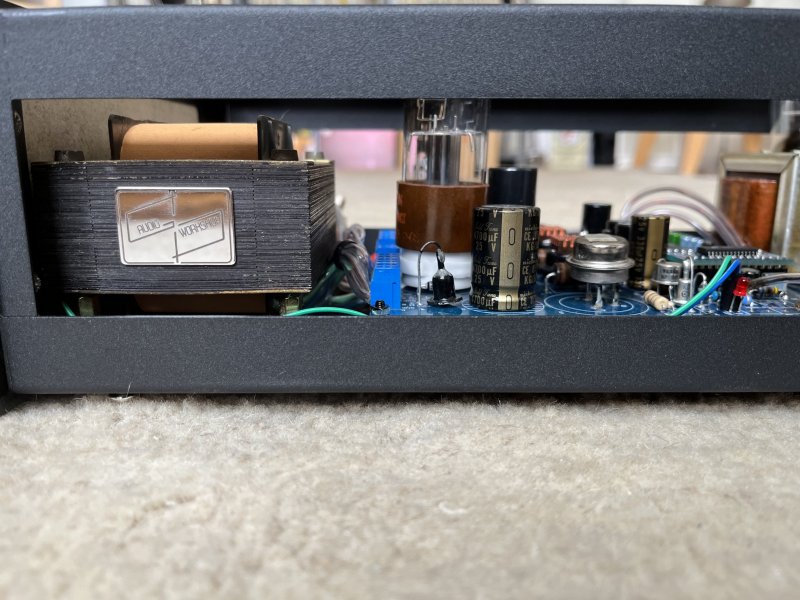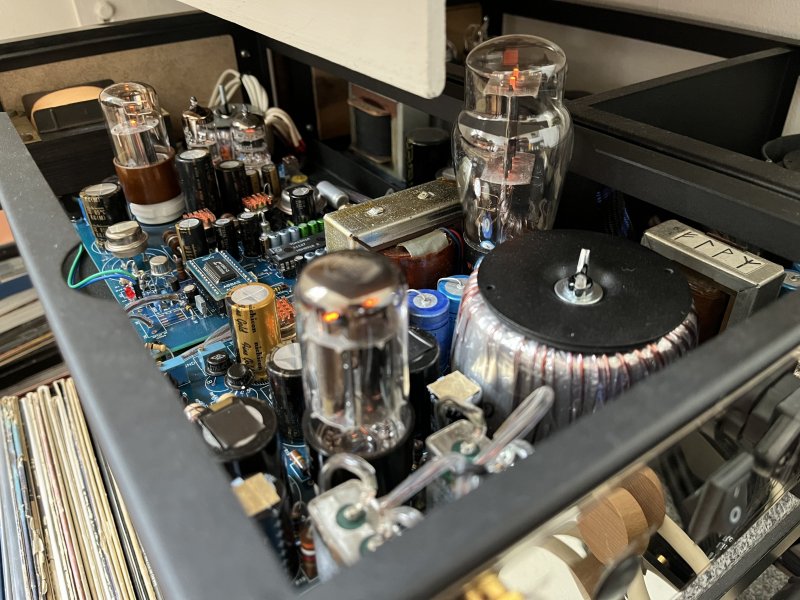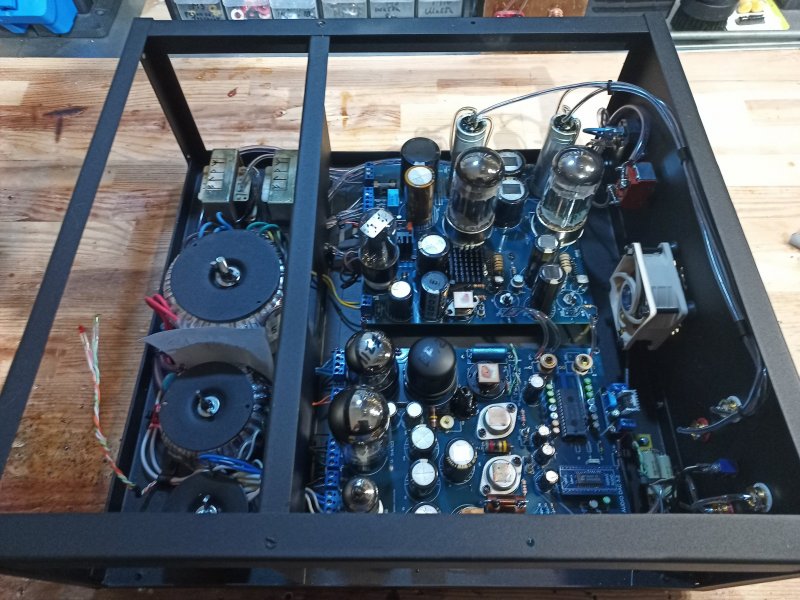OT but I just got an Abbas IC between amp and preamp and I've never really heard much of a difference between cables before to be honest, until now. Wow. Soundstage height and depth greatly improved over Purist Audio cable it replaced.
Abbas dac 2.1 se
- Thread starter jespera
- Start date
I have been using the superb High Fidelity CT1-Ultimate digital cable since bought new about 9 or 10 years ago. It was expensive at 2400.00 USD but very much worth it given its contribution to sound quality in my audio system. It uses magnetic technology to enhance signal flow.Whatever it’s doing, it’s effective. I have learned through actual listening experiences that digital cables absolutely matter.OT but I just got an Abbas IC between amp and preamp and I've never really heard much of a difference between cables before to be honest, until now. Wow. Soundstage height and depth greatly improved over Purist Audio cable it replaced.
It performs beautifully between the Pro-Ject RS2T transport and the Abbas 3.2SE. I ordered the Abbas RCA SPDIF cable along with the DAC purely out of curiosity to compare with the splendid CT1-Ultimate SPDIF cable. Well, the Abbas cable is indeed competitive.
Bass frequencies and midrange region the 2 cables battle toe to toe. In terms of musical flow/rhythm/pace/fluidity, again “very “ close ! I’d give the CT1-Ultimate a small advantage in upper frequency air, openess and dynamics. But these are subtle gradients.
The thing is that the Abbas cable is 220.00 USD !!! For me the difference is what I consistently hear with a really good silver cable versus a really good copper cable. Silver seems to be a bit more open, airy and transparent, yet maintaining excellent tonality. I haven’t encountered harshness or brightness with silver cables in my system.
I can easily go with either cable in my system and enjoy the music thoroughly. The Abbas cable is a tremendous value proposition. I can recommend it to any Abbas DAC owner (Or non Abbas owners as well) unequivocally. Underpriced like his DACs given the sonic performance one receives.
Charles
I've been looking at the Abbas USB to SPDIF converter, does anybody know if the SE version includes a clock as standard (included)?
Is a clock recommended for a USB to SPDIF converter?
I emailed Abbas and the answer I received was: "The tube clock is installed on the board ECC88 + EB91"
I've looked at the Abbas price list and it shows "EAA91/EAA91/EC86/ECC88" for the USB to SPDIF SE version so I'm a little confused as the price list shows the ECC88 tube Abbas mentions in his reply but not the EB91 tube.
Is the SE version the best version? is the clock included? is a clock recommended in a USB to SPDIF converter? Is it best to buy the USB to SPDIF converter without the clock and buy a separate tube clock?
Any answers/replies would be greatly appreciated.
I've attached an image from the price list.
Is a clock recommended for a USB to SPDIF converter?
I emailed Abbas and the answer I received was: "The tube clock is installed on the board ECC88 + EB91"
I've looked at the Abbas price list and it shows "EAA91/EAA91/EC86/ECC88" for the USB to SPDIF SE version so I'm a little confused as the price list shows the ECC88 tube Abbas mentions in his reply but not the EB91 tube.
Is the SE version the best version? is the clock included? is a clock recommended in a USB to SPDIF converter? Is it best to buy the USB to SPDIF converter without the clock and buy a separate tube clock?
Any answers/replies would be greatly appreciated.
I've attached an image from the price list.
Attachments
His usb-spdif converter has a valve clock built in. Apparently, this one is based on ecc88+eb91, but he has previously used other tubes.
The listed separate tube clock is for other devices such as cd players or switches.
Abbas’ tda1541 based dacs 2.x and 3.x also have valve clocks for the dem cells of the dac chip.
Tube clocking the digital signal adds a tad extra liquidity to the sound.
I use an abbas usb-spdif tube clock after the usb output of my auralic streamer. I prefer that to the direct spdif output.
The listed separate tube clock is for other devices such as cd players or switches.
Abbas’ tda1541 based dacs 2.x and 3.x also have valve clocks for the dem cells of the dac chip.
Tube clocking the digital signal adds a tad extra liquidity to the sound.
I use an abbas usb-spdif tube clock after the usb output of my auralic streamer. I prefer that to the direct spdif output.
I believe the EB91 and EAA91 are the same tube or interchangeable. I have the SE version and can confirm the tubes are as he described in the price list and that the DEM clock is part of the unit. I alsed Abbas about whether his new tube clock would bring anything to the table with my USB/SPDIF converter and DAC 2.2 and he said "no" since both my units contain their own clock. Basically don't spend money that isn't needed. I think his tube clock would be more applicable if you were using a transport or something that you wanted to reclock.I've been looking at the Abbas USB to SPDIF converter, does anybody know if the SE version includes a clock as standard (included)?
Is a clock recommended for a USB to SPDIF converter?
I emailed Abbas and the answer I received was: "The tube clock is installed on the board ECC88 + EB91"
I've looked at the Abbas price list and it shows "EAA91/EAA91/EC86/ECC88" for the USB to SPDIF SE version so I'm a little confused as the price list shows the ECC88 tube Abbas mentions in his reply but not the EB91 tube.
Is the SE version the best version? is the clock included? is a clock recommended in a USB to SPDIF converter? Is it best to buy the USB to SPDIF converter without the clock and buy a separate tube clock?
Any answers/replies would be greatly appreciated.
I've attached an image from the price list.
By the way, I compared my Abbas USB/SPDIF against a Mutec MC3+ with external linear power supply and could hear no difference - which is a big statement for the Abbas unit.
Thanks for the reply and info @jespera and @Carnelian , very much appreciated.I believe the EB91 and EAA91 are the same tube or interchangeable. I have the SE version and can confirm the tubes are as he described in the price list and that the DEM clock is part of the unit. I alsed Abbas about whether his new tube clock would bring anything to the table with my USB/SPDIF converter and DAC 2.2 and he said "no" since both my units contain their own clock. Basically don't spend money that isn't needed. I think his tube clock would be more applicable if you were using a transport or something that you wanted to reclock.
By the way, I compared my Abbas USB/SPDIF against a Mutec MC3+ with external linear power supply and could hear no difference - which is a big statement for the Abbas unit.
I have a Mutec MC3+ (without PS) but was told recently that The Abbas was a big step up.
I recently bought a second hand Abbas USB - SPDIF converter off the bay but then cancelled the order as the description wasn't very clear and I wasn't 100% sure which model I was purchasing.
I'll order one direct from Abbas.
So if the USB - SPDIF converter has a clock and the Dac 3.21 SE also has a clock that would be a good solution as far a clocking goes?
I think my Innuos Phoenix Net also has a clock and maybe my Innuos Statement also clocks the signal as well.
Is there any way or would it be beneficial to use something like the Mutec REF10 SE120 Reference Master Clock to master clock/sync the signal for all the other clocks?
Last edited:
I'd be interested if others hear a positive difference with the Abbas vs a Mutec. I was impressed that it sounded as good as the Mutec and I never liked the Mutec interface so for me it is nice to have one cable in and one out and not worrying about a million settings and buttons on the Mutec. I also use an ABBAS SPDIF cable. I'm not a clocking expert, but unless Abbas builds in a clock input, an external clock won't be compatible with his gear and I suspect he feels his solution is optimal (at the price range). You've got a highly relieving system so you may hear more than a lesser system might reveal.Thanks for the reply and info @jespera and @Carnelian , very much appreciated.
I have a Mutec MC3+ (without PS) but was told recently that The Abbas was a big step up.
I recently bought a second hand Abbas USB - SPDIF converter off the bay but then cancelled the order as the description wasn't very clear and I wasn't 100% sure which model I was purchasing.
I'll order one direct from Abbas.
So if the USB - SPDIF converter has a clock and the Dac 3.21 SE also has a clock that would be a good solution as far a clocking goes?
I think my Innuos Phoenix Net also has a clock and maybe my Innuos Statement also clocks the signal as well.
Is there any way or would it be beneficial to use something like the Mutec REF10 SE120 Reference Master Clock to master clock/sync the signal for all the other clocks?
I thought some of you here may enjoy and appreciate jazz guitarists as I do. I’ve listened to this type of music for 30 years in many intimate jazz venues.
The 3.2SE just nails the groove and vibe of this stuff so well.
Charles
The 3.2SE just nails the groove and vibe of this stuff so well.
Last edited:
@Yorkshireman I too would have ordered the larger 3.2 DAC cited above but for reasons of space chose the shoe box size. I can confirm the power regulation of the 2.4SE+ includes larger glass as pictured in the attached images (taken the day I received from Kyiv --the lady at the post office collection desk was pleased to hear of what was in the box and the place of issue !) As noted already, I was amazed by the beauty and scale of this version of Abbas' design, in which the size of valves and the hand wound transformer one imagines plays a part. I do not think of changing this machine ! Enjoy.
Attachments
@Paul49720@Yorkshireman I too would have ordered the larger 3.2 DAC cited above but for reasons of space chose the shoe box size. I can confirm the power regulation of the 2.4SE+ includes larger glass as pictured in the attached images (taken the day I received from Kyiv --the lady at the post office collection desk was pleased to hear of what was in the box and the place of issue !) As noted already, I was amazed by the beauty and scale of this version of Abbas' design, in which the size of valves and the hand wound transformer one imagines plays a part. I do not think of changing this machine ! Enjoy.
Congratulations and thanks for sharing. I understand how much you enjoy and admire the sheer music reproduction of your DAC. The Abbas DACs fly beneath the radar and yet so gratifyingly accomplished at what they do.
Charles
Some exciting news from Abbas!
Ready for shipping. I hope not a too far way from listening

Ready for shipping. I hope not a too far way from listening
Attachments
Last edited:
@ArtnetSome exciting news from Abbas!
Ready for shipping. I hope not a too far way from listening

Terrific news!!!
I’m looking forward to your listening impressions. A long wait I know but worth it.
Charles
...here as well, seems he finished a bunsh. Delivery since yesterday on the way...
Last edited:
Agreed completely here.. the Mutec's number of settings and its interface I find an annoyance, given I dont feel like its offering me, in my use case, any benefit. Very interesting that people prefer the Abbas over it.. I might have to get one myself.I'd be interested if others hear a positive difference with the Abbas vs a Mutec. I was impressed that it sounded as good as the Mutec and I never liked the Mutec interface so for me it is nice to have one cable in and one out and not worrying about a million settings and buttons on the Mutec. I also use an ABBAS SPDIF cable. I'm not a clocking expert, but unless Abbas builds in a clock input, an external clock won't be compatible with his gear and I suspect he feels his solution is optimal (at the price range). You've got a highly relieving system so you may hear more than a lesser system might reveal.
Anyone using the USB cable from Abbas with their USB to SPDIF convertor?
Might need to order one!!
Might need to order one!!
Anyone using the USB cable from Abbas with their USB to SPDIF convertor?
Might need to order one!!
Yes im using one.
I preferred it to an expensive cable that i had on loan. Cant remember the brand. Other than that i havent spent much time comparing.
.
i havent spent much time comparing.
Thanks jespera.
It does seem more appropriate to use an Abbas one and dont really want to spend time comparing. Whilst every system may behave differently I am happier going with the designers ears that know, and of course users also
Similar threads
- Replies
- 2
- Views
- 859
- Replies
- 1
- Views
- 369
- Replies
- 12
- Views
- 1K
- Replies
- 10
- Views
- 1K
| Steve Williams Site Founder | Site Owner | Administrator | Ron Resnick Site Owner | Administrator | Julian (The Fixer) Website Build | Marketing Managersing |











